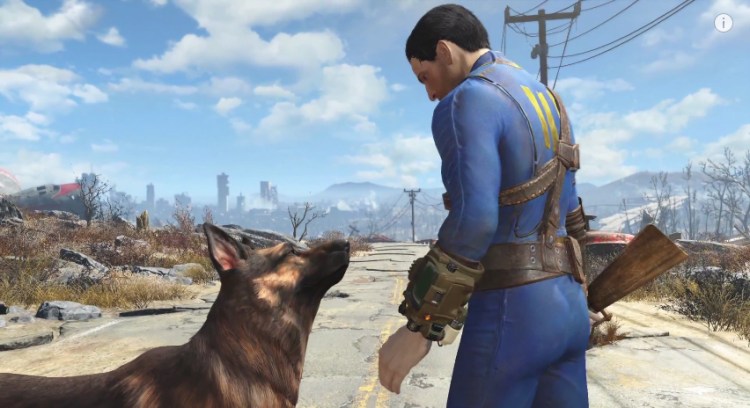What degree of creativity will keep players coming back? Activision has found the formula with Call of Duty, with a 12th version coming this year. Consumers keep spending a billion dollars a year on the games, and the developers are rotating three different versions of the franchise in order to keep things fresh.
One of the biggest transitions was moving Call of Duty from the tired World War II settings to the modern battlefields of the Middle East. The technology of the graphics gets better and better, and the developers do what they can to be more creative, like enabling fluid animations that will allow players of this year’s Call of Duty: Black Ops III to shoot while moving. Is that quantum of new creativity enough for gamers?
Michael Pachter, analyst at Wedbush Securities, talked about the reasons why consumers keep buying some franchises over and over again. He said in an email, “I think annualized franchises have a hook that in most cases makes sense. For sports, the players change, so if you want to play authentic NFL, NBA, or FIFA games, you have to buy the new ones. For Call of Duty, it’s multiplayer, and if all of your friends buy the new one, you have to buy it in order to play with them. For Skylanders, the age span of the addressable market is only five years wide (5 – 10 year-old boys), so every year, 20 percent of the market outgrows it and 20 percent grows into it, keeping demand stable and fresh.”
Creative exhaustion results when the developers run out of big ideas. The audience for sequels starts to shrink, and then the audience moves somewhere else.
Megan Gaiser, founder of Contagious Creativity and former chief executive of the Nancy Drew game publisher Her Interactive, believes the future of gaming depends on creativity that goes beyond what the game industry expresses right now. In her view, it should be more inclusive and deliver content that is more widely appealing to diverse audiences and their experiences. “It’s important to recognize that diversity isn’t about “instead,” but “also.” she said.
“Creativity has become the most valuable skill set in the 21st century and creative leadership is the most important competitive advantage we can employ,” Gaiser said. While the first-person shooter franchises like Call of Duty continue to dominate, there is also room to explore genres to find entirely new market niches and revenues. We have a great opportunity to tell a much broader spectrum of human stories.”
Mike Gallagher, chief executive of the Entertainment Software Association, the industry trade group that puts on E3, bristles at the notion that the games at the show aren’t creative. He said the show is bigger than ever on almost every measure and that about 100 of the 1,500 games being shown at E3 have never been revealed before. He pointed to some big changes, like the fact that there are 22 virtual reality and augmented reality companies and 70 mobile game companies coming to E3 this year. Full told, there are 273 companies exhibiting, up from 220 last year, across 350,000 square feet.
“When you walk into the show, it’s immediately apparent you are in one of the most creative environments on the face of the Earth,” Gallagher said in an interview. “It generates 50 billion impressions, and it’s high octane creativity.”
Video games are unique as interactive entertainment, he said. When you get your hands on a game, you can quickly learn what is innovative about its gameplay. You wouldn’t be able to appreciate that if you simply dismissed it outright because it was branded or had a sequel, Gallagher said.
“There’s innovation and gameplay and creativity within these titles, and that’s why they are blockbuster sellers year after year,” Gallagher said. “But our industry has also never had more indie successes.”
The indies are usually the answer to the creativity question. A couple of weeks ago, I wrote about the creative and zany games that indie game developers are showing off at E3. It would be wonderful to see consumers embrace this creativity and for those indies to gather some financial might to enable them to reach the largest possible audiences. But too often we have seen creative indie games flop because they just don’t stand out among a million games in the market.
Sunny Dhillon, a partner at Signia Venture Partners, which has invested in game companies such as Super Evil Megacorp, sees his job as identifying the creativity early enough on the right platform. Being creative on a maturing platform, such as the current state of mobile games where brands and user acquisition costs are big factors, is a challenge. But Dhillon is excited about trends such as e-sports and VR, where he can see creativity on those trends or platforms bearing fruit.
When new platforms get created, the opportunity for being creative arises. Then the brands and marketers move in, and they change the market. The creative people can seize the market back but not with sequels or clones. Rather, brands can endear themselves to gamers with reinventing or rebooting, which is a more refined approach to dealing with a maturing market, Dhillon said.
This whole discussion about creativity and how much of it a game needs gets back to that vague notion of fun. Sometimes, if a game is fun, you don’t care that you never seen something like it, and you don’t care if you see something like it all of the time. Game creators have made gaming into a $70 billion industry worldwide because they stuck with fun. You’ll see that I’ve raised a lot of questions here and haven’t offered a lot of answers. After all, I haven’t been to E3 yet.
VentureBeat's mission is to be a digital town square for technical decision-makers to gain knowledge about transformative enterprise technology and transact. Learn More



